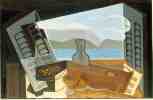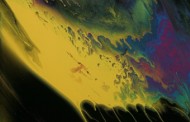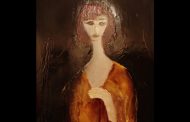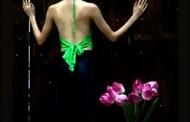 Living beside the sea at Bandol in 1921, Gris had diverse reactions to the setting. It was “sinister,” “beautiful,” and “sad.” So moved was he that the theme of the open window dominated his production that year. In the first of these works, The Open Window, Gris returned to the metaphoric conception of Place Ravignan.
Living beside the sea at Bandol in 1921, Gris had diverse reactions to the setting. It was “sinister,” “beautiful,” and “sad.” So moved was he that the theme of the open window dominated his production that year. In the first of these works, The Open Window, Gris returned to the metaphoric conception of Place Ravignan.
That is, the interior and exterior spaces are distinct. Instead of a still life before a window, however, Gris discovered an archetypical subject for him, the musical instrument before nature. Though no text exists to make this combination a conventionally recognized allegory, the two principal components have long traditions in art history and in Gris’s own evolution. We may, thus, speak of a private system of symbols in this case. Again, Gris’s friendship with Matisse may have intervened, for until the latter’s paintings of 1917, an instrument before a window did not exist in the history of the window motif in art, although it was hinted at in allegories of the senses. The interior, characterized by music, is evocative of the human world of art and intellect. The landscape has direct, visual, and sensuous qualities typical of anture. There is perhaps implicit a yearning for that natural simplicity. Potential for a merger is shown by the rhythmic repetition of curves in the guitar and mountains and in the cloud that begins to enter the room.
 In The Painter’s Window, Gris collected some of his favorite motifs: the palette, guitar, pipe, fruit, and playing cards. These symbols of the senses appear before an open window. But instead of the opening unveiling a tempting, sought-after world, it simply juxtaposes the other side of the interior-exterior relationship.
In The Painter’s Window, Gris collected some of his favorite motifs: the palette, guitar, pipe, fruit, and playing cards. These symbols of the senses appear before an open window. But instead of the opening unveiling a tempting, sought-after world, it simply juxtaposes the other side of the interior-exterior relationship.
The Spanish artist Juan Gris, [b. Mar. 13, 1887, d. May 11, 1927], was, with Pablo Picasso and Georges Braque, one of the first and greatest exponents of the cubist idiom in painting.
 Portrait of Picasso
Portrait of Picasso
1912; Oil on canvas, 93.4 x 74.3 cm; Collection of Mrs. and Mrs. Leigh Block, Art Institute of Chicago (DC 13)
Originally named Jose Victoriano Gonzalez, he adopted the pseudonym by which he is known after moving (1906) to Paris, where he lived as Picasso’s friend and neighbor. Between 1907 and 1912 he watched closely the development of the cubist style and in 1912 exhibited his Homage to Picasso (collection of Mrs. and Mrs. Leigh Block, Chicago), which established his reputation as a painter of the first rank. He worked closely with Picasso and Braque until the outbreak of World War I, adapting what had been their intuitively generated innovations to his own methodical temperament.
In the 1920s, Gris designed costumes and scenery for Serge DIAGHILEV’s Ballets Russes. He also completed some of the boldest and most mature statements of his cubist style, with landscape-still lifes that compress interiors and exteriors into synthetic cubist compositions, such as Le Canigou (1921; Albright-Knox Art Gallery, Buffalo, N.Y.), and figure paintings, especially the fine series of clowns that includes Two Pierrots (1922; collection of Mr. and Mrs. Harold Hecht, Beverly Hills, Calif.).
 Man in the Cafe
Man in the Cafe
1912; Oil on canvas, 128.2 x 88 cm; Philadelphia Museum of Art
 Le Lavabo
Le Lavabo
1912; Oil on canvas with paper and mirror collage, 51″ X 35″; Collection Vicomtesse de Noailles, Paris
 Landscape with Houses at Ceret
Landscape with Houses at Ceret
1913; Oil on canvas, 100 x 65 cm; Galeria Theo, Madrid (DC56)
 Landscape at Ceret
Landscape at Ceret
1913; Oil on canvas, 92 x 60 cm; Moderna Museet, Stockholm
 The Man at the Café
The Man at the Café
1914; Oil and papier colle pasted on canvas, 99 x 72 cm; Acquavella Galleries, Inc., New York (DC 76)
 Still Life before an Open Window: Place Ravignan
Still Life before an Open Window: Place Ravignan
1915; Oil on canvas, 116 x 89 cm; Philadelphia Museum of Art (DC 131)
Sebastian Dal










































